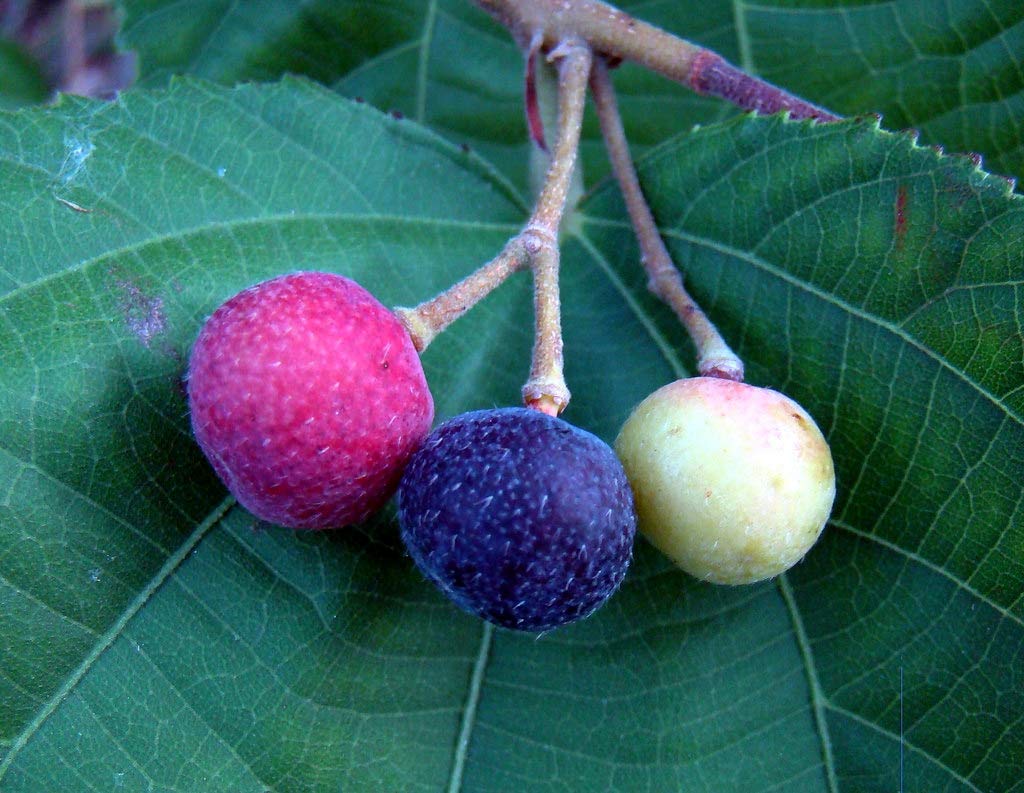Love it? Add to your wishlist
Your favorites, all in one place. Shop quickly and easily with the wishlist feature!
[message]
[title]
[message]





Veliyath Gardens
Couldn't load pickup availability
Nestled quietly among the lesser-known fruits of the Indian subcontinent, Phalsa, also known as Indian Sherbet Berry, holds an ancient legacy of taste, health, and resilience. Its botanical name, Grewia asiatica, traces back to the Swedish botanist Nehemiah Grew, and its native roots stretch across India and Southeast Asia, where the fruit has been cherished for centuries in both rural life and traditional healing systems.
In different parts of India, this tangy berry is known simply as Phalsa or Falsa, often sold in roadside baskets during the hot summer months. In Pakistan, it shares the same name and is frequently blended into chilled summer drinks. In Thailand, a similar species of the Grewia genus is cultivated for its medicinal bark and berries, although under a different local name.
Wherever it appears, this berry commands affection, not only for its thirst-quenching nature but also for its deep connection with folk medicine and cultural wellness.
Bite into a ripe Phalsa, and your senses awaken to a complex harmony of sweet and sour, reminiscent of ripe black grapes with a zestier twist. Its purplish-black hue cloaks a soft pulp that offers both refreshment and richness, with a texture that is smooth yet juicy.
Whether eaten fresh with a sprinkle of rock salt or crushed into sherbet, its cooling properties are instantly felt—a perfect natural antidote to scorching summer days.
While the fruit is often enjoyed raw, Phalsa has long served as a base for:
Homemade summer sherbets that cool the body and replenish lost minerals.
Chutneys and preserves, adding a tangy punch to traditional meals.
Fermented drinks and wines, a delicacy in some tribal communities.
Ayurvedic preparations, where both fruit and bark find use in treating internal imbalances.
Its culinary applications are diverse, but its most celebrated form remains the Phalsa juice, a refreshing and nutritious beverage often passed down as a household recipe during hot months.
Phalsa fruit isn’t merely a flavorful indulgence—it is a potent health ally, packed with bioactive compounds. Here’s why adding this plant to your garden could mean adding decades of health to your life:
Regulates Blood Sugar: Traditionally consumed by those managing diabetes, Phalsa has shown hypoglycemic effects that help stabilize sugar levels.
Controls Hypertension: The berry’s natural potassium and polyphenolic content assist in maintaining healthy blood pressure.
Cardioprotective Effects: Antioxidants such as anthocyanins support heart health and reduce oxidative stress on the cardiovascular system.
Prevents Heat Stroke: Its cooling nature helps regulate body temperature, a reason it is widely consumed in peak summer.
Skin and Neurological Benefits: Used in traditional medicine to manage skin infections, it is also believed to have a calming effect on the nervous system.
Antimicrobial and Anti-inflammatory: Extracts of the fruit, leaves, and bark have demonstrated antibacterial and anti-inflammatory properties in several studies.
Beyond its individual benefits, Phalsa is celebrated for offering a synergistic wellness effect, balancing body and mind alike.
Phalsa plants, while modest in appearance, are highly valued for their quick growth, ease of maintenance, and resilience to varying climates.
The plant begins flowering within 2 to 3 years, offering seasonal harvests from late spring to early summer.
It grows as a small deciduous shrub or tree, ideal even for compact gardens.
Prefers warm, tropical to subtropical climates but can tolerate slight drought and moderate frost.
Thrives in well-drained loamy soils, requiring minimal amendments.
Needs full sunlight exposure to bear sweet, ripe berries.
Watering should be moderate, ensuring moisture during flowering and fruiting but avoiding waterlogging.
Moderate care makes it a favorite among home gardeners.
Occasional pruning after fruiting helps maintain shape and encourages branching.
At Veliyath Gardens, Phalsa plants are propagated under expert supervision, ensuring that you receive a healthy sapling ready to thrive in your home garden or farm.
Phalsa is best consumed fresh. However, its short shelf life calls for timely preservation:
Refrigeration extends freshness for 2–3 days post-harvest.
Juicing and freezing the pulp retains both taste and nutrients.
Traditional drying methods allow its use in herbal teas and infusions.
Phalsa’s tangy pulp also lends itself well to syrup making, which can be stored for longer periods and used year-round.
In many rural households, Phalsa juice is offered to guests as a gesture of care, especially during the harsh summer heat. Elders speak fondly of the fruit as a healer, once administered for fever, sunstroke, and digestive distress.
Children in villages still collect the berries from backyard trees and eat them straight off the stem, a scene that defines the rustic charm of Indian summers.
Planting Phalsa isn’t just about cultivating a fruit—it’s about reviving a piece of tradition, a taste of the past that still nourishes the future.
Choosing to grow Phalsa means more than adding a shrub to your yard. It means:
Growing a natural summer cooler that offers more than store-bought refreshers.
Introducing your family to a fruit that is both medicinal and delicious.
Supporting indigenous plants that are increasingly rare in modern landscaping.
Experiencing the joy of harvesting your own antioxidant-rich berries.
At Veliyath Gardens, we believe in reconnecting people with nature’s wisdom. Our Phalsa plants are ready to find new homes—perhaps yours. Plant one today, and let every summer be a celebration of health, heritage, and flavor.
Needs full sunlight exposure to bear sweet, ripe berries.
Watering should be moderate, ensuring moisture during flowering and fruiting but avoiding waterlogging.
Maintenance Needs
Moderate care makes it a favorite among home gardeners.
Occasional pruning after fruiting helps maintain shape and encourages branching.
Cardioprotective Effects: Antioxidants such as anthocyanins support heart health and reduce oxidative stress on the cardiovascular system.
Prevents Heat Stroke: Its cooling nature helps regulate body temperature, a reason it is widely consumed in peak summer.
Skin and Neurological Benefits: Used in traditional medicine to manage skin infections, it is also believed to have a calming effect on the nervous system.
Growing a natural summer cooler that offers more than store-bought refreshers.
Introducing your family to a fruit that is both medicinal and delicious.
Supporting indigenous plants that are increasingly rare in modern landscaping.
Experiencing the joy of harvesting your own antioxidant-rich berries.






